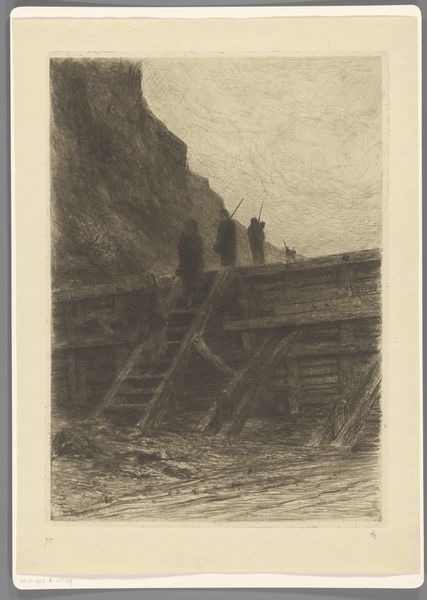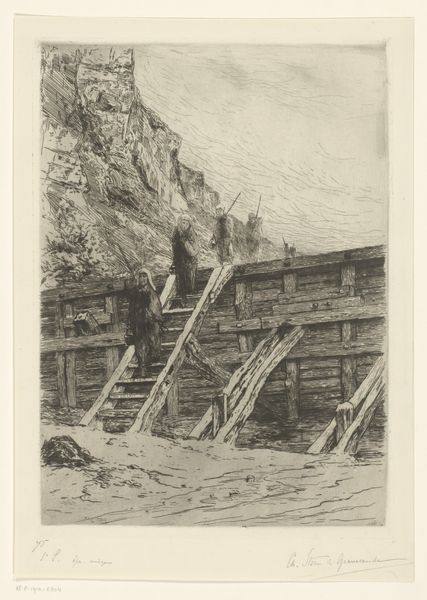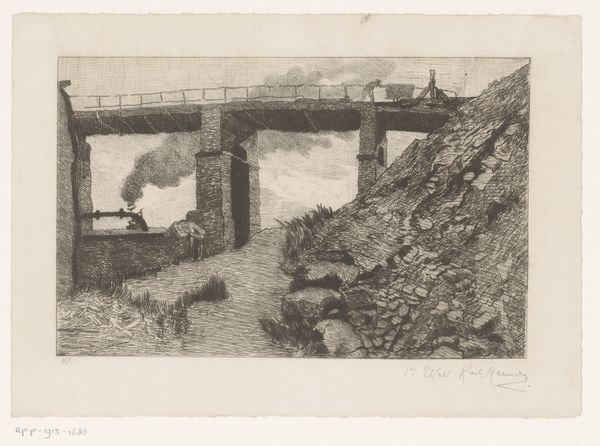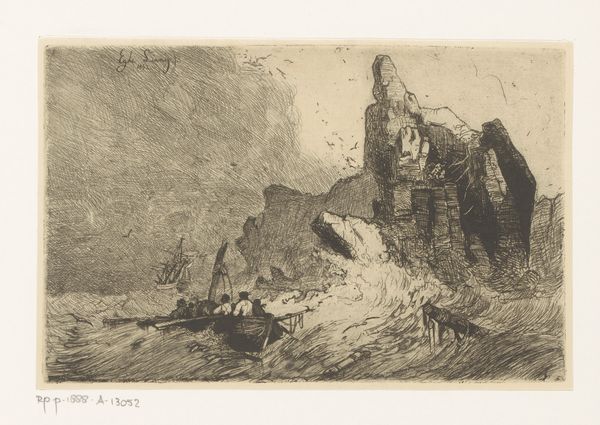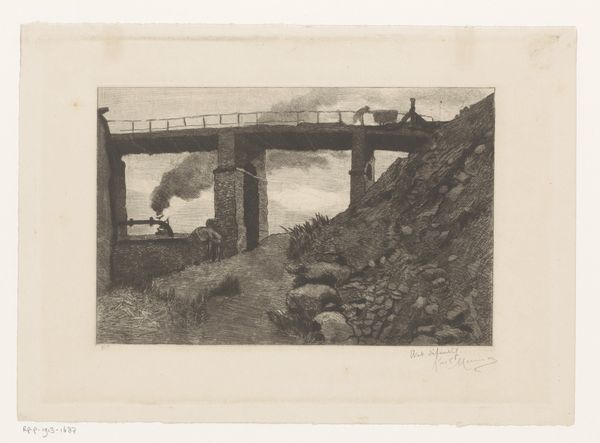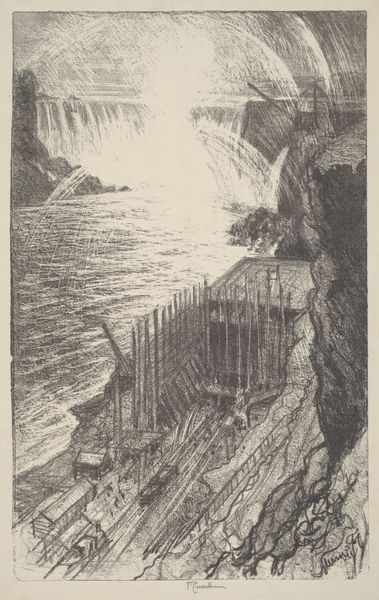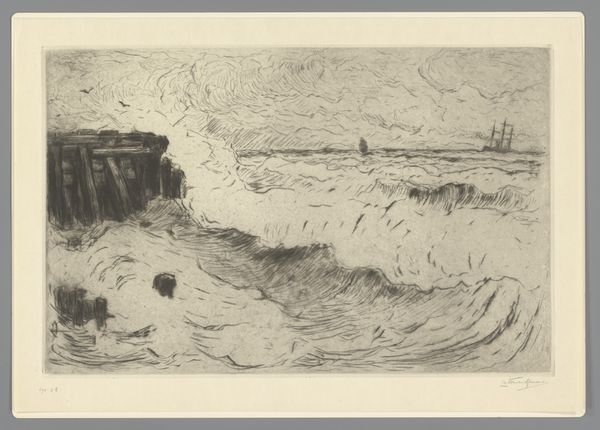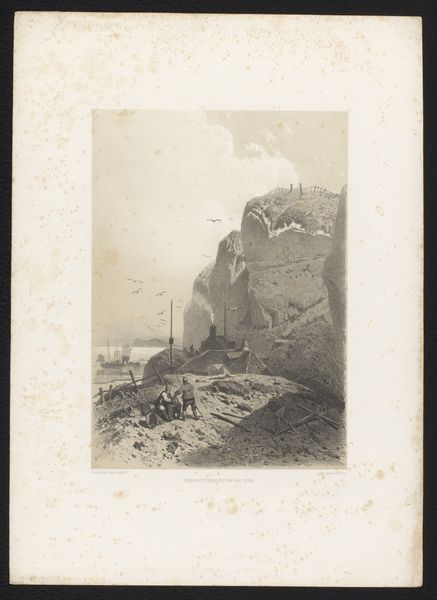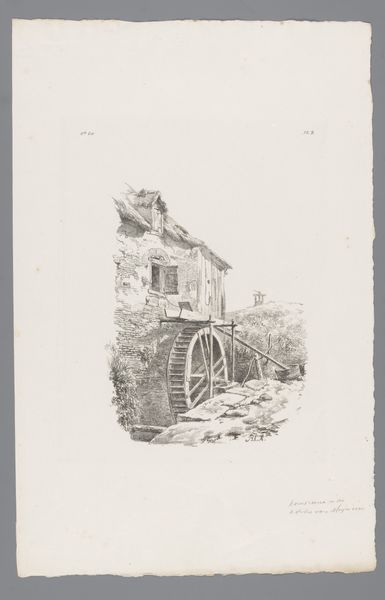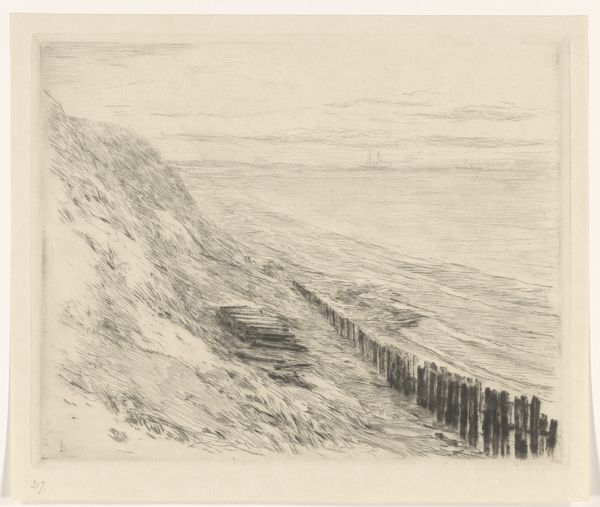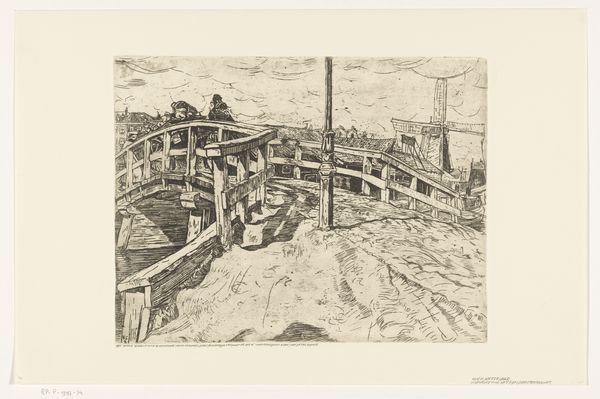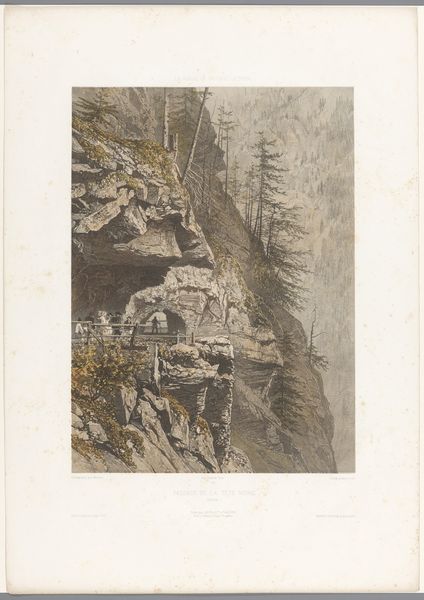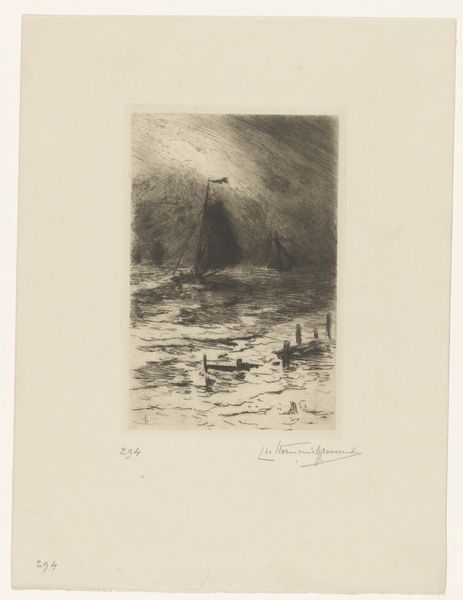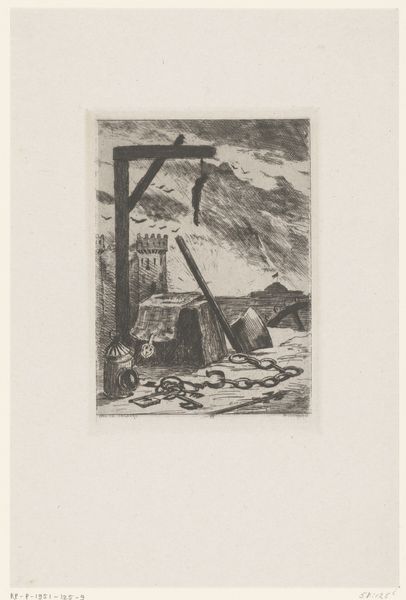
print, etching
# print
#
impressionism
#
etching
#
landscape
#
genre-painting
#
sea
Dimensions: height 345 mm, width 248 mm
Copyright: Rijks Museum: Open Domain
Curator: Looking at this print, it evokes a real sense of melancholy for me. It's so stark, with these figures emerging from what looks like a misty coastline. Editor: Absolutely, it possesses a subdued quality that suggests both the harshness of labor and the vulnerability of coastal life. This is "Returning Fishermen," an etching by Carel Nicolaas Storm van 's-Gravesande, dating from around 1873, which we can find here at the Rijksmuseum. Curator: The use of etching, that tactile scratching into the metal, really mirrors the toil. I love how the rough texture makes the whole scene almost breathe. You can practically feel the salty air and the damp chill sinking into your bones, can't you? Editor: I do. And what stands out to me is how 's-Gravesande portrays a return to shore not as a triumphant homecoming, but as a continuation of struggle. Consider the way the fishermen ascend the precarious, almost crumbling wooden structure, burdened, yes, with their catch, but also, perhaps, by the precariousness of their livelihoods, impacted as they would have been, by issues such as access, labor exploitation and market forces, which are still highly relevant to our discussions about equality today. Curator: That makes me consider the humanity here. Those small figures almost fade into the landscape, yet each has this quiet dignity, like the strength found in survival. It makes me feel small, in a nice way. Like a whisper in a grand storm. Editor: Yes, that tension is key: these fishermen, embedded in the landscape, facing not just the elements but also an indifferent socio-economic system. They symbolize a community’s constant negotiation with nature, tradition, and a rapidly modernizing world. And the artistic style helps underscore it. While some define it as Impressionistic, note that 's-Gravesande used print, so there is more line-making involved, versus light being applied through paint. Curator: I see what you mean, though for me it is Impressionistic through that sense of capturing a fleeting moment, an experience instead of some grandiose historical tale. Still, to think that this etching, with all its somber grace, still speaks volumes about struggles so deeply interwoven into history is... hauntingly beautiful. Editor: Agreed. And perhaps through understanding the struggles represented here, we can develop a greater respect for labor and a greater awareness of how contemporary struggles mirror those of the past.
Comments
No comments
Be the first to comment and join the conversation on the ultimate creative platform.
